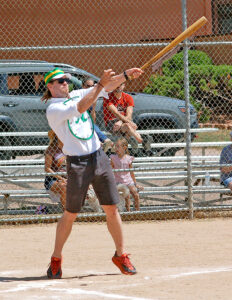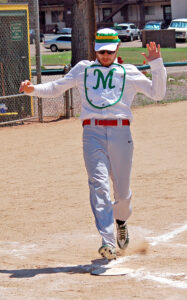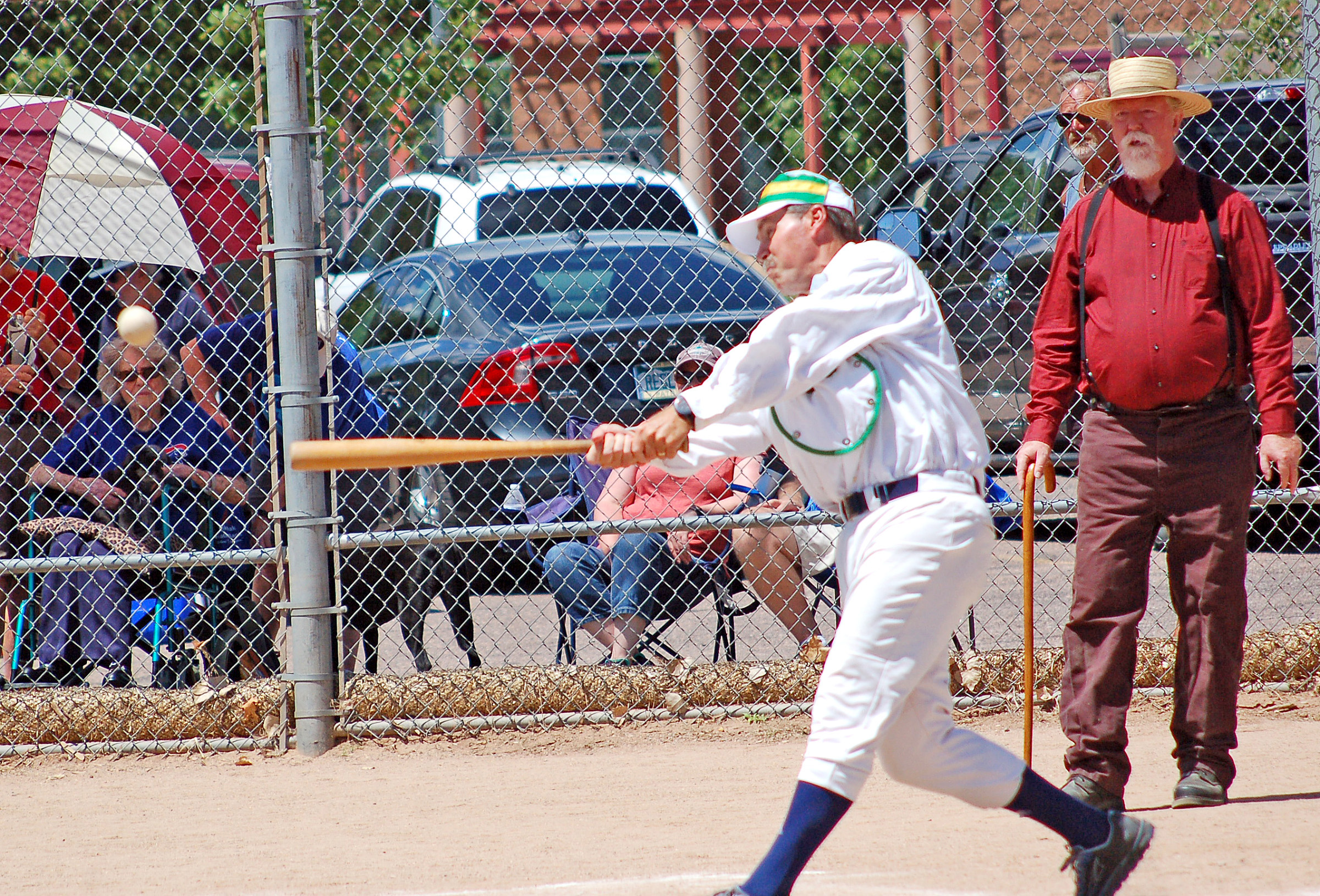
The cranks were in the bleachers, the ballists on both clubs were ready, the strikers were warming up and hoping to provide the tallykeeper with plenty of aces, and the base tenders were taking their positions on the diamond.
For about three hours on Saturday, Aug. 6, it was 1864 again at Roger Maestas Field in Manitou. The Star Base Ball Club of Colorado Territory was in town, taking on the Manitou Springers of the Manitou Springs Heritage Center.
The contest was the latest in an outgoing rivalry the MSHC sponsors in conjunction with the Colorado Vintage Base Ball Association. The association is a nonprofit, formed in 1993, that is dedicated to preserving the history of 19th century baseball in Colorado.
“This is a really nice field,” said Roger “Digger” Hadix, manager of the visiting Star team. “Generally, we play on fields that are pretty rough, a lot rougher than this.”
Ferril “Mad Dog” Mason, who had come from Denver to serve as umpire for the game, agreed. His job was to be the judge of fair and unfair play, and to determine all disputes and differences that may occur during the game.
The Springers captain, Mike Maio, was busy counting his players and had a resigned look on his face. With only eight, he was about to be pressed into service, probably as a hurler or maybe as a first hand.

What followed turned out to be a surprisingly close contest as the visitors withstood Manitou’s ninth-inning, bases-loaded rally to post a 15-13 victory.
It was surprising because the home team players were up against an experienced team that sees action several times every month and is thoroughly acquainted with the 1864 rules. But the Springers’ non-stop hustle almost salvaged the day for Manitou.
Trailing for most of the game, the local contingent rallied for a combined six runs in the eighth and ninth innings to cut the losing margin to two runs.
The CVBBA games are played by early-day rules, using original terminology and featuring a slew of quirky traditions such as runners ringing a bell on the scorekeeper’s table after they score by crossing “home base” (actually a round plate).
Fans of the modern-day game can easily recognize most of the basic principles and strategies of the game because the rules have remained relatively unchanged. However, a few key differences set “base ball” apart from “baseball.”

Perhaps the biggest game changer is a rule that allows the defense to record an out if a hit ball is either caught in the air or caught after it bounces one time. The ball, composed of rubber and yarn and covered with leather, is far livelier than today’s baseball.
The lack of gloves, an innovation that didn’t come until the 1870s, added to fielders’ difficulties.
“Also, there’s no over-running first base, and sliding into a base is considered ungentlemanly,” said Hadix, who in addition to being a member of the vintage baseball organization for 28 years, wrote a book, “Baseball in Colorado Springs.”
The original terminology includes cranks (fans), ballists (players), strikers (batters), aces (runs) tallykeepers (scorekeepers), base tenders and first, second and third hands (infielders).
Manitou ballists participating in the vintage contest included Jared Thompson, Stephen Maggs, Gerald Mitchell, Neil Chapman, Will Bishop, Craig Houghton, Ash Peak and Maio.
In the day’s second game, city staff defeated the Manitou Springs Volunteer Fire Department 25-14 in softball.

